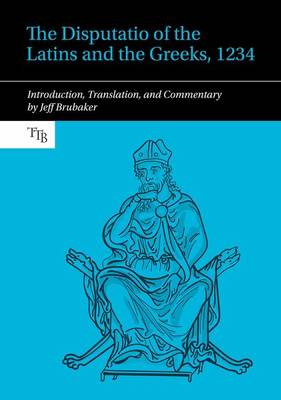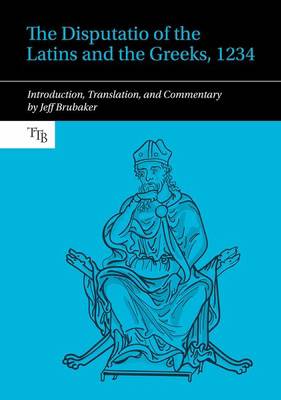
- Retrait gratuit dans votre magasin Club
- 7.000.000 titres dans notre catalogue
- Payer en toute sécurité
- Toujours un magasin près de chez vous
- Retrait gratuit dans votre magasin Club
- 7.000.0000 titres dans notre catalogue
- Payer en toute sécurité
- Toujours un magasin près de chez vous
The Disputatio of the Latins and the Greeks, 1234
Introduction, Translation, and Commentary
Jeff BrubakerDescription
In 1234, four mendicant friars arrived in the Byzantine city of Nicaea to discuss the possibility of a union between the Greek and Roman Churches. The controversy over the specific differences in both doctrine and practice had taken on a new urgency in the thirteenth century. The Fourth Crusade in 1204 placed the Byzantine capital of Constantinople under Latin control, creating an atmosphere of nearly continuous conflict, and yet the two sides agreed to meet in hopes of a peaceful settlement.
Presented in translation for the first time, the report of those friars describing the discussions, or disputatio, of 1234 illuminates the full spectrum of motivations and implications surrounding the prospect of church union in the years following the Fourth Crusade. The letters exchanged by Pope Gregory IX and Patriarch Germanos II demonstrate the terms under which both sides entered the negotiations with a notable degree of optimism. Brought together, these sources represent the largest collection of material describing any dialogue between the churches in the thirteenth century. Translation and analysis of these sources call into question the long-held view that attempts to end the schism of the churches were perpetually doomed to fail.
Spécifications
Parties prenantes
- Auteur(s) :
- Editeur:
Contenu
- Nombre de pages :
- 248
- Langue:
- Anglais
- Collection :
- Tome:
- n° 12
Caractéristiques
- EAN:
- 9781800856783
- Date de parution :
- 01-01-23
- Format:
- Livre relié
- Format numérique:
- Genaaid
- Dimensions :
- 142 mm x 201 mm
- Poids :
- 430 g

Les avis
Nous publions uniquement les avis qui respectent les conditions requises. Consultez nos conditions pour les avis.






